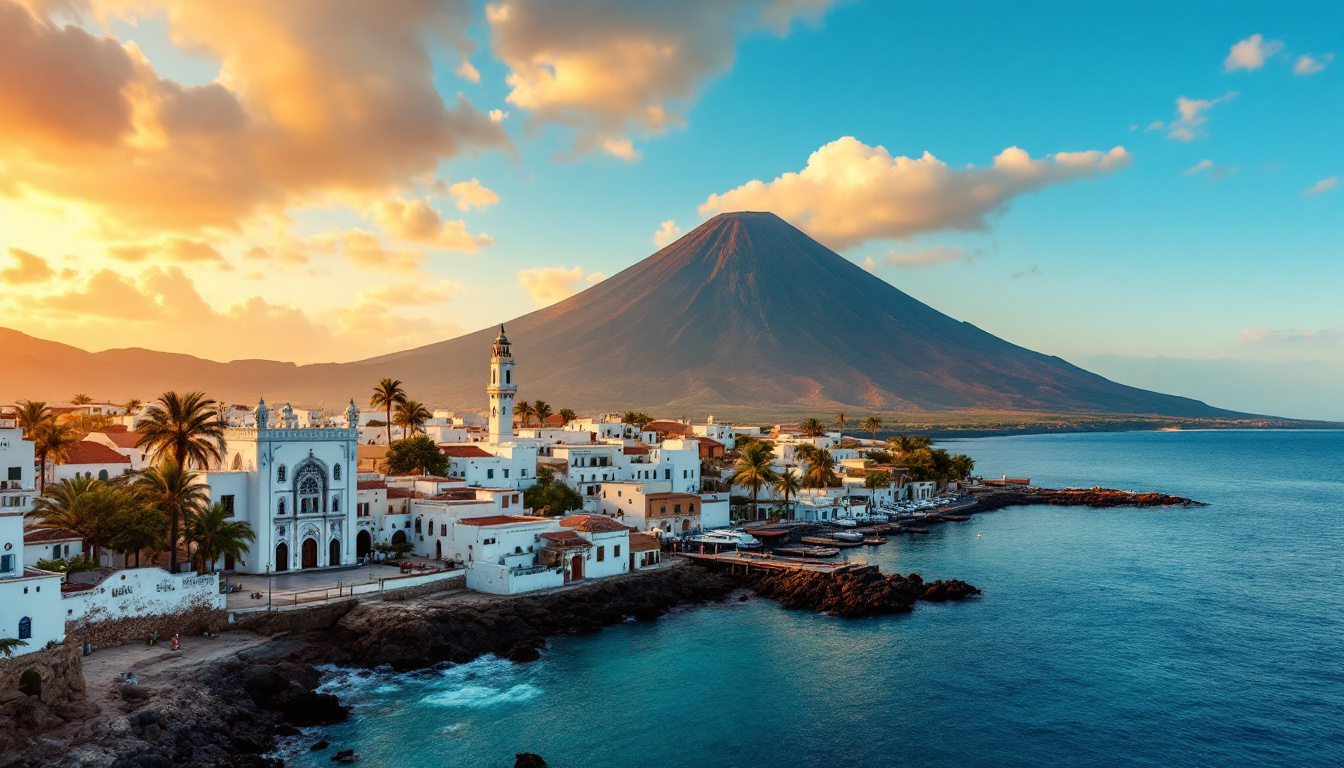Hidden among volcanic peaks and fringed by the azure waters of the Indian Ocean lies Moroni, a city where time moves to a different rhythm. As capital of Comoros, this Arabian-influenced gem sits at the foot of Mount Karthala, one of Africa’s largest active volcanoes. Unlike its more touristed island neighbors, Moroni remains blissfully authentic—a treasure waiting to be discovered by adventurous travelers.
A cultural crossroads where Arabia meets Africa
Walking through Moroni’s ancient medina feels like stepping into a forgotten chapter of history. Narrow winding streets reveal buildings adorned with intricately carved wooden doors—silent witnesses to centuries of trade between Africa, Arabia, and Persia. The influence of these civilizations is palpable in every corner of the city.
Local historian Hassan Mohammed explains,
“Our architecture tells the story of our people. Each carving on these doors represents the blending of cultures that makes Comoros unique in the Indian Ocean.”
The iconic Friday Mosque: A 600-year-old maritime sentinel
Standing proudly along the waterfront since 1427, the Friday Mosque (Mosquée de Vendredi) serves as Moroni’s spiritual center. Its distinctive white facades and minaret (added in 1921) create a striking contrast against the deep blues of the harbor. Unlike many religious sites, visitors can enter outside prayer times—just remember to dress modestly and remove your shoes.
Volo Volo Market: Where Comoros comes alive
For a sensory explosion, there’s no better place than the bustling Volo Volo Market. Vendors sell everything from fresh-caught seafood to exotic spices and vibrant fabrics. The market pulses with energy from sunrise to sunset, offering a window into authentic Comorian daily life.
Like many small island communities, Moroni’s market serves as both commercial hub and social gathering place, where news travels faster than any digital network.
In the shadow of a sleeping giant
Mount Karthala looms 7,746 feet above the island, its massive caldera measuring nearly two miles across. This active volcano last erupted in 2007, adding another layer to Grande Comore’s already fascinating geological story. Adventurous travelers can arrange guided hikes to the summit—a challenging full-day journey rewarded with breathtaking panoramas.
For something less strenuous but equally captivating, visit Lac Salé (Salt Lake), where vivid mineral-rich waters shift between turquoise, emerald, and amber depending on the light.
Iconi: Where legends leap from cliffs
Just south of Moroni lies the historic village of Iconi, site of one of Comoros’ most poignant legends. Local guide Fatima shares,
“In the early 19th century, when Portuguese invaders arrived, young women jumped from these cliffs rather than face capture. Today, we honor their courage whenever we tell their story.”
The dramatic sea cliffs and ancient mosque make Iconi a must-visit side trip, much like other island sanctuaries with powerful histories.
When to visit: Timing is everything
The dry season (April to November) offers ideal conditions for exploring Grande Comore. This period provides perfect weather for hiking Mount Karthala and exploring the island’s natural wonders without the challenges of the December-to-April rainy season.
Like many undiscovered island destinations, Comoros rewards travelers who time their visits thoughtfully.
Where Arabian nights become reality
Accommodations in Moroni range from simple guesthouses to the more upscale Golden Tulip Hotel. What they lack in luxury, they make up for in authenticity and warm Comorian hospitality. For travelers accustomed to high-end safari lodges, Moroni offers a refreshingly different experience.
Finding paradise at the edge of the map
Moroni feels like the antithesis of mass tourism—a place where genuine cultural experiences happen naturally. Much like those special coastal villages that capture travelers’ hearts, this volcanic capital charms with its unpolished authenticity.
Local artist Mariama puts it perfectly:
“We don’t have fancy resorts or tourist attractions manufactured for visitors. What we offer instead is something real—a chance to experience a place that still moves to the rhythms of nature and tradition.”
As the sun sets behind Mount Karthala, painting Moroni’s white buildings in gold and amber, you’ll understand why this volcanic capital deserves a spot on any adventurous traveler’s map. In Comoros, the greatest luxury isn’t found in five-star amenities, but in discovering a world few others have seen.
